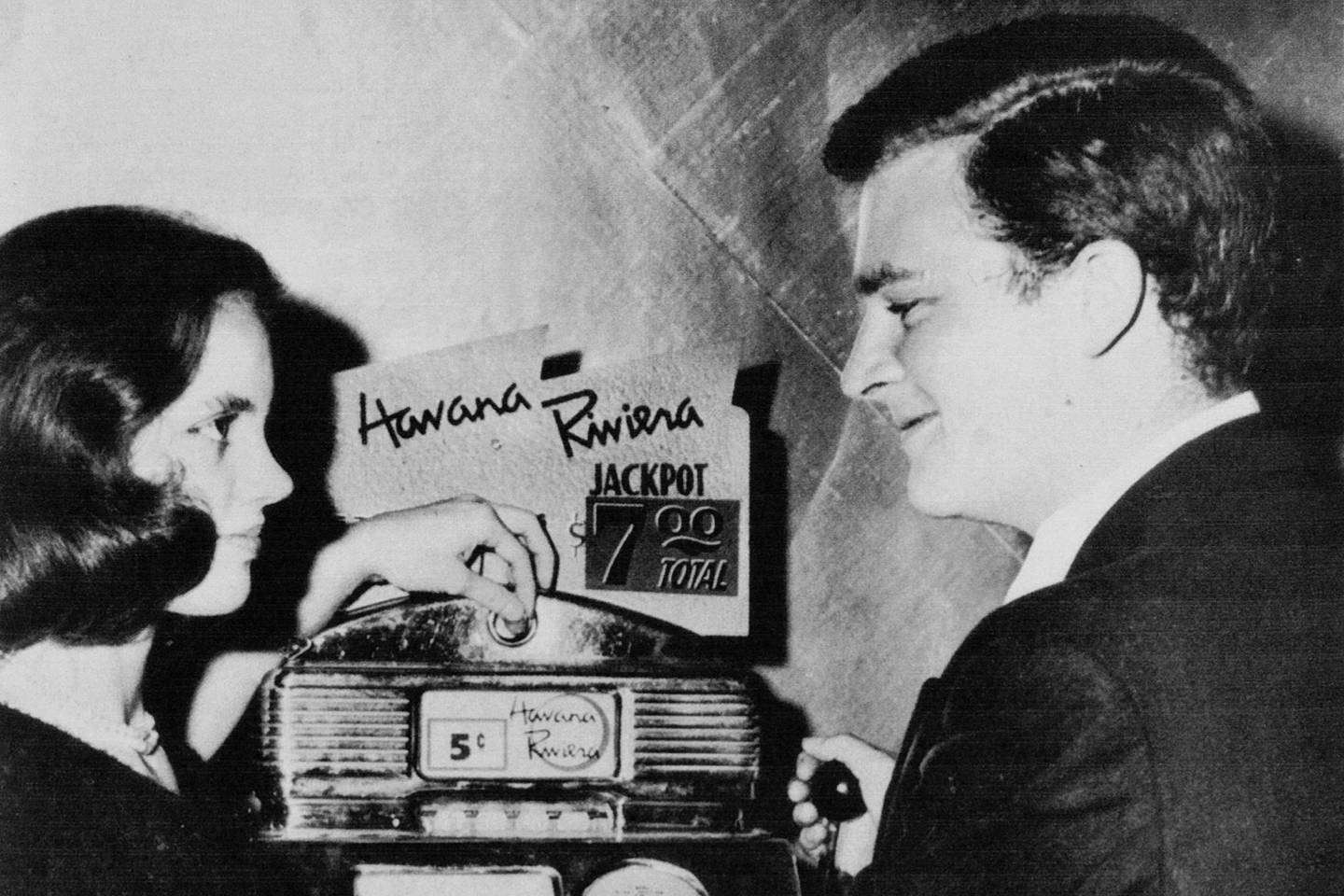
“Caroline, your sister’s run away with Elvis!” a voice screamed down the hall. This was swiftly followed by loud footsteps charging down the school corridor and excited voices chattering at high decibel outside my dormitory door. I opened it just wide enough to see an hysterical bunch of 13 year olds desperately wanting to be the first to tell me the news.
The year was 1957. I had been sent off to Tortington Park boarding school in leafy Sussex two years earlier. Now, in my parents’ view, the school was the best place for me to be, providing a shield from the prying eyes, the poisoned pens and the lurid gossip of Fleet Street’s tabloid journalists. I must be protected, at all costs, they decided, from the widely publicised family drama unfolding at high speed at home. With the world’s media taking up residence outside our front door, this sleepy market town of Arundel provided a welcome refuge.
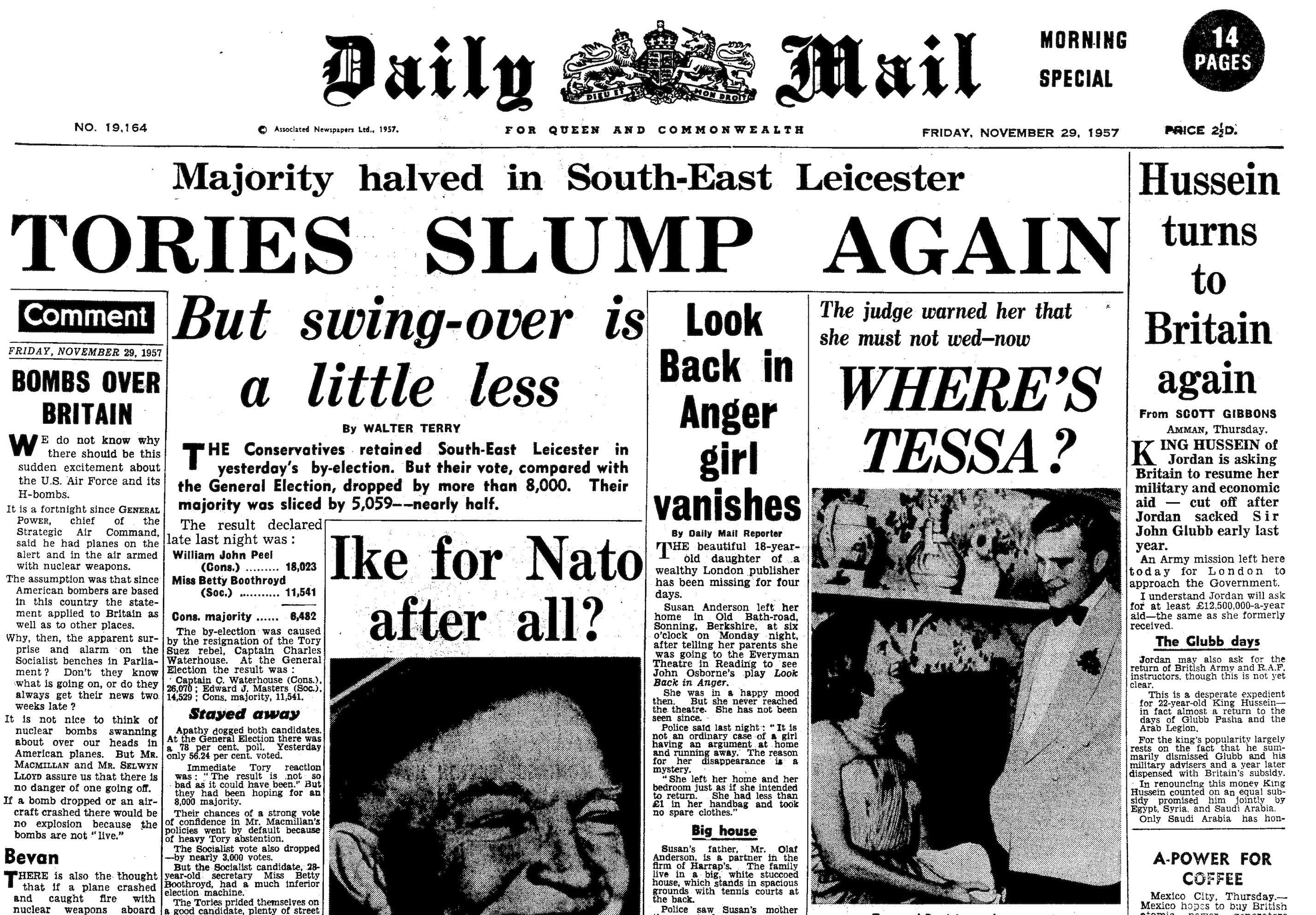
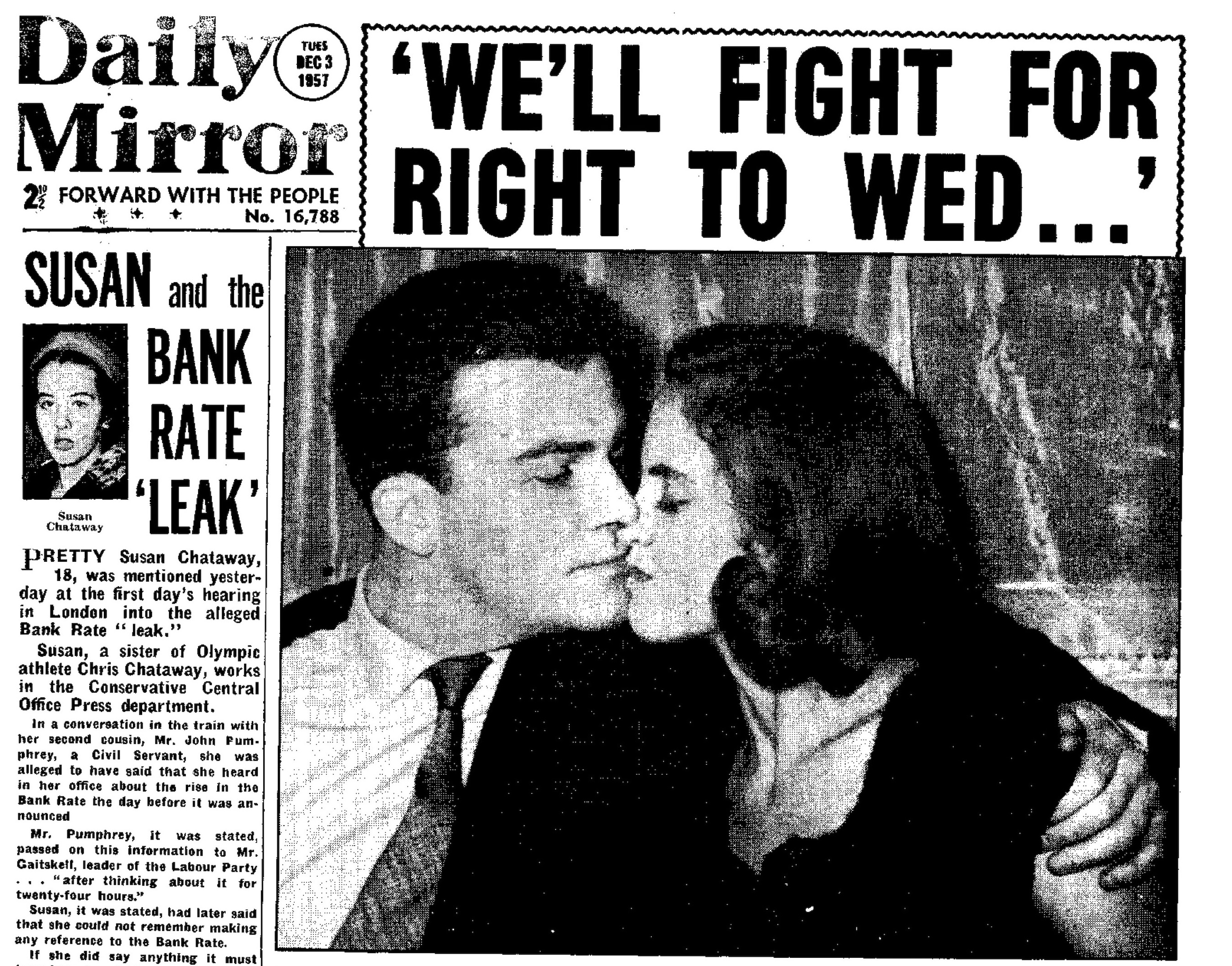
Outside my dorm, these frenzied teenagers, my schoolmates, were making sure the story caught up with me. Every day after breakfast the newspapers were pinned up, page by page, along the long rectangular notice board hanging on the hall outside the dining room. And every day we jostled, elbowed and shoved each other in order to scour the pages looking for gossip about our favourite pop stars, movie stars and celebrities. When news of my sister’s very public love affair became the story of the day, my father had called the headmistress and requested she cut out all references to my family from the newspapers.
Somehow, on this particular day, however, there had been no compliant censor with scissors and word began to trickle out fast. It was easy for me to work out what had happened. Maybe a couple of girls had scanned the daily paper and either got their facts wrong or it had been misinterpreted by someone who overheard them reading the salacious story out loud. But somehow the story morphed – my older sister, Tessa, was eloping with Elvis Presley! You can well imagine that I suddenly became the most popular girl in the school!
The truth was, however, very different. Tessa, a minor at the time, had met a 27 year old artist, Dominick Elwes, son of the Royal Portrait Painter, Simon Elwes, at a Debutante Ball earlier that year. She had fallen madly in love and, against my parents’ wishes, decided to marry him. Despite Dominick’s illustrious family connections, (his aunt was the renowned biographer Nancy Mitford, his first cousin was the third Baron Rennell and his paternal grandmother was the daughter of the Earl of Denbigh), Dominick had no job and few prospects.
“But he’s handsome. And very funny!” Tessa insisted.
My father, being of the practical, old-school type, replied: “He’s almost 30. He hasn’t got a job. And as far as I can see, he’s never had a proper one. He’s got no money. How do you expect to live?”
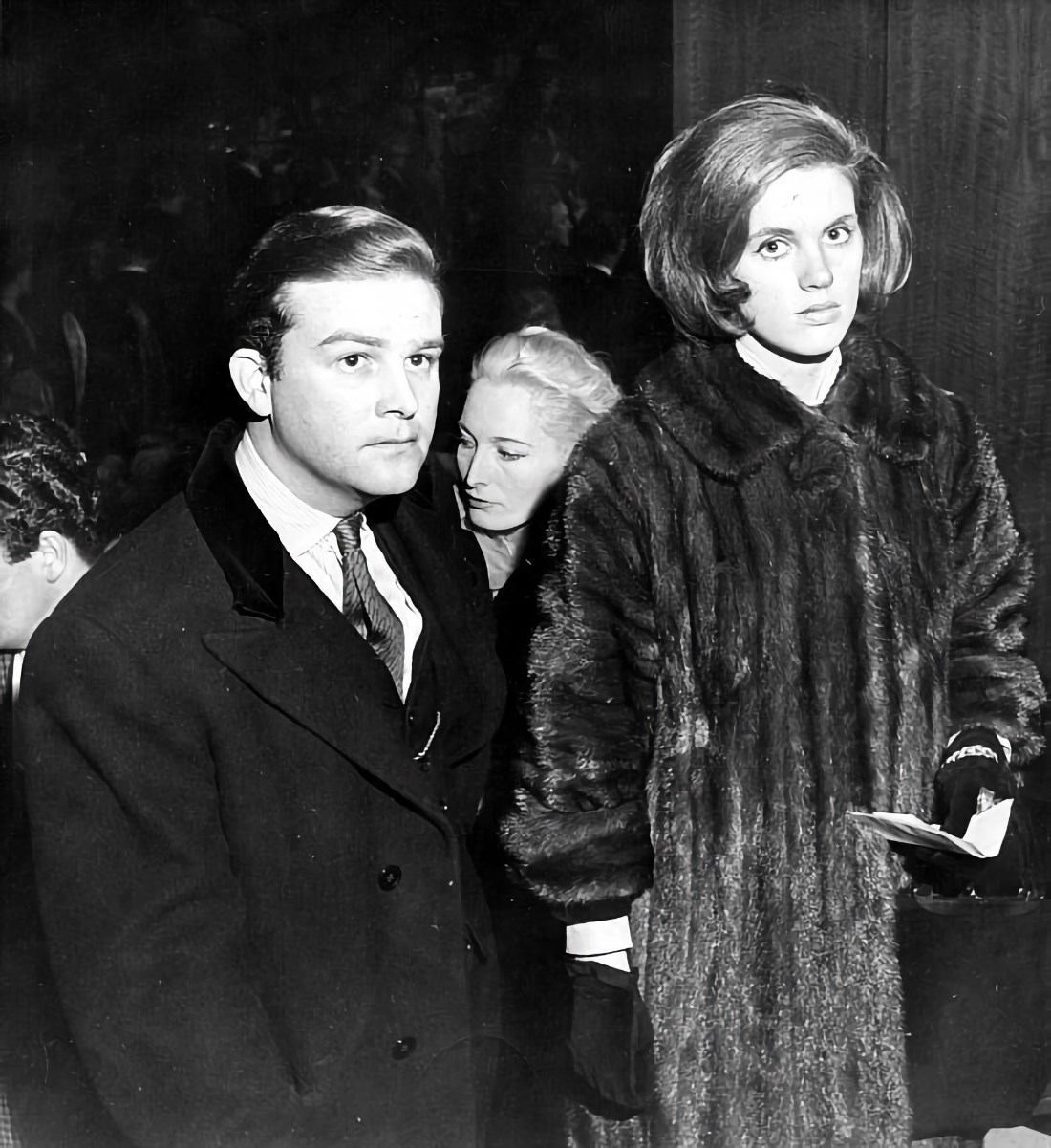
Tessa, being as stubborn as my father was old-fashioned, was not about to be deterred by common sense. Equally concerned, our mother and our maternal grandmother hatched a separate plot of their own. Rather than forbid the marriage initially, they concocted a plan to take Tessa away on an extended holiday to the Middle East, hoping she would be distracted and forget about Dominick. That plan, too, backfired. Instead of forgetting him, by the end of the holiday Tessa had run up an exorbitant international phone bill, having accepted long distance phone calls from Dominick several times a day.
My parents, who had long been divorced and remarried, had not been on speaking terms for almost seven years by then. They now found a reason to come together to make a joint decision. They both agreed on one thing – the wedding should never take place. They sought help from lawyers who advised making Tessa a Ward of Court. On 27 November 1957 at the High Court in London, Justice Sir Ronald Roxburgh issued a restraining order against Dominick Elwes. The decree stipulated that should he marry Tessa without the Court’s consent, he must go to prison.
Tessa and Dominick refused to wait around for the lawyers’ decision. After being tipped off by a journalist, they fled to Gretna Green, a popular place in those days for quickie weddings. But with the world’s Press in hot pursuit and fearful they might be betrayed and brought back to London, they boarded a flight to New York and, onwards, to Havana, Cuba.
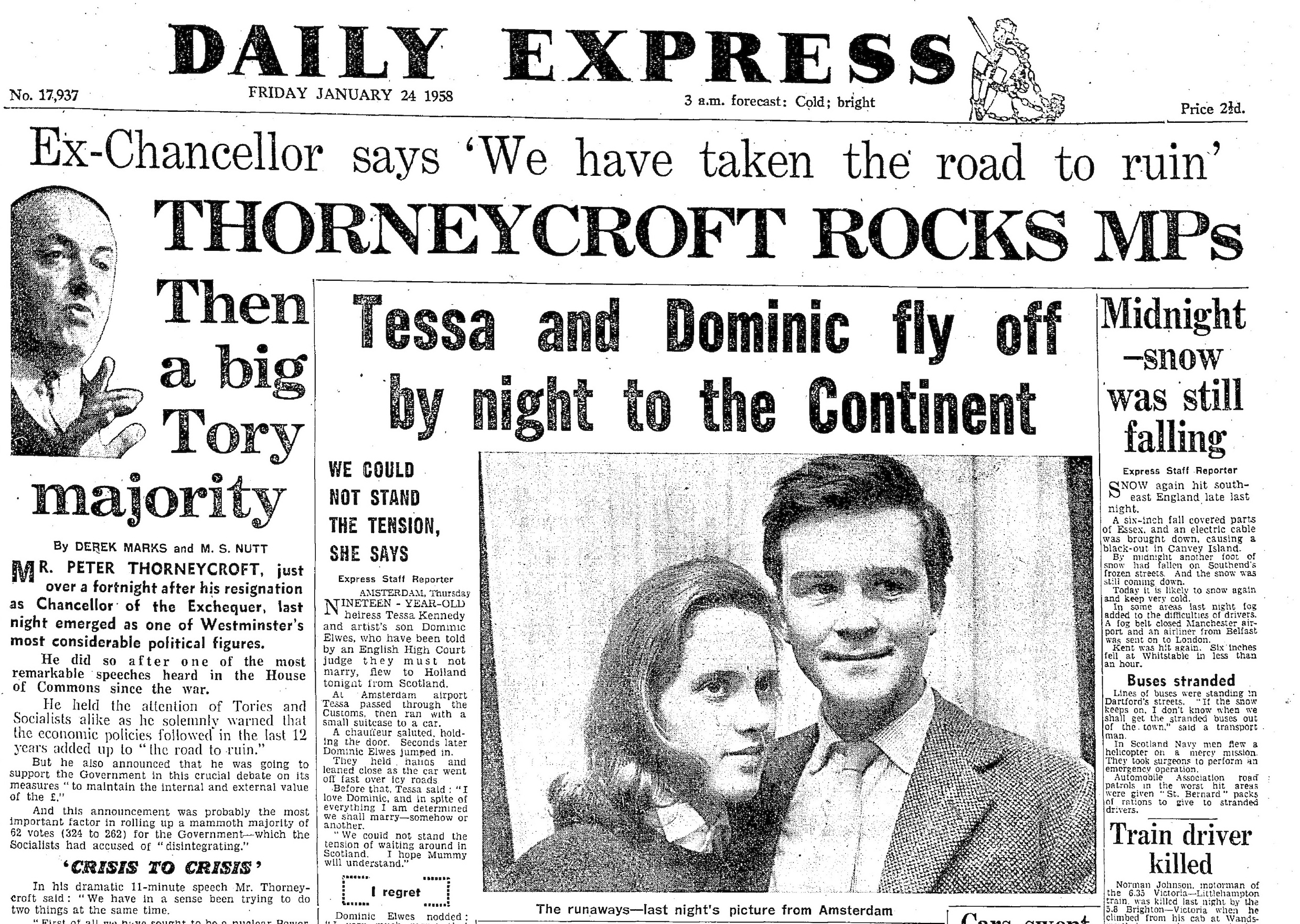
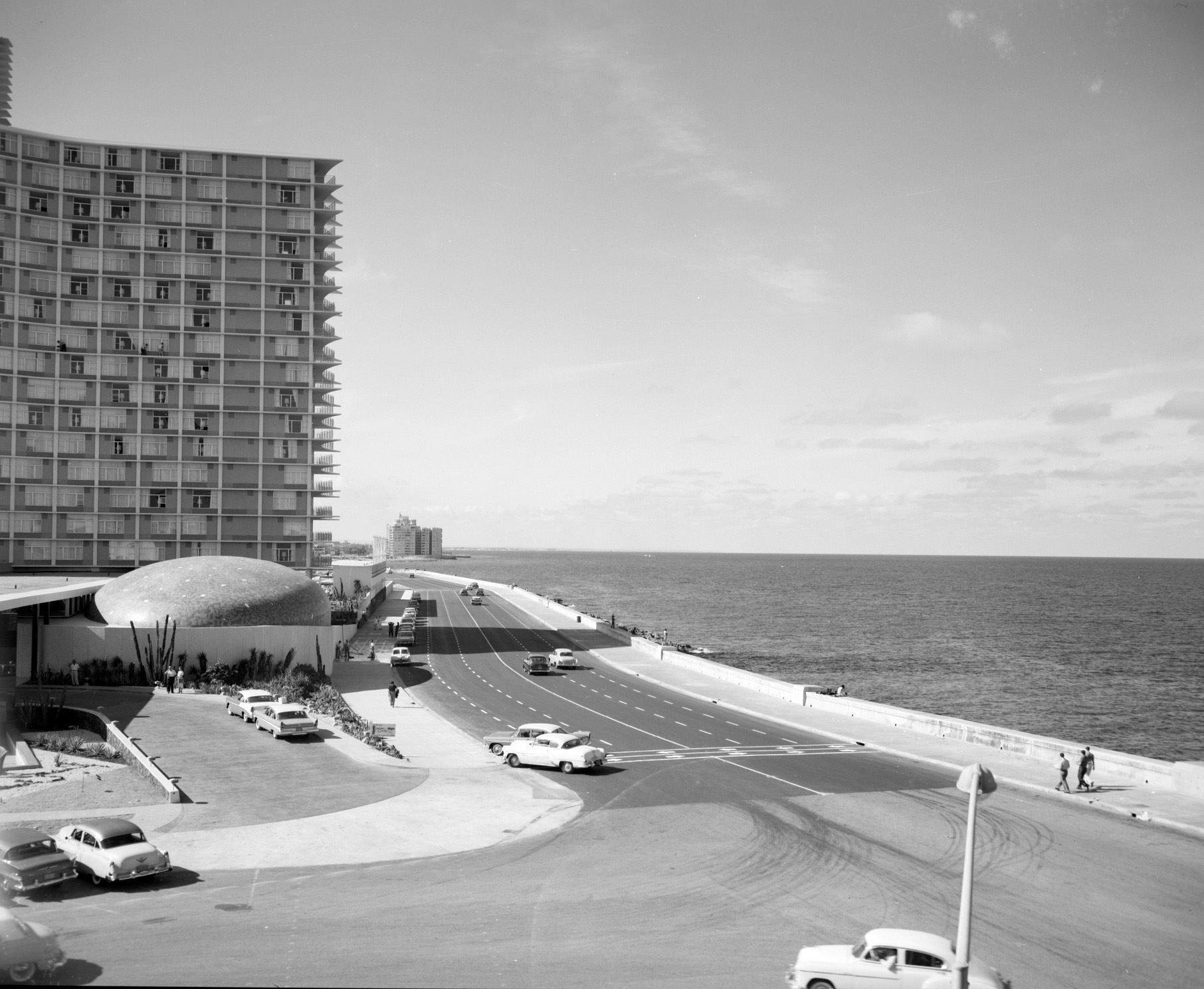
They found themselves in a country going through tremendous political upheaval. But, despite the visible signs of a country in the process of breaking apart, the rich appeared to be in complete ignorance or in utter denial. Havana, even at that time, just one year before the Revolution, was still considered to be the “party capital” of the world. The Mafia had taken over the hotels and Casinos as a way of laundering their ill-gotten money and avoiding US taxes. Jetsetters would fly down from New York for gambling and sex-fuelled weekends. And US criminals, attempting to evade US law, would head for Havana to “disappear” as a way of avoiding a trial and an ensuing prison sentence. Havana was awash with money – but only for the privileged few. Resentment had been building for years among the poorer classes. And in the rugged Sierra Maestra mountains, rebel guerrilla leaders, headed by the young Fidel Castro, were preparing to overthrow the corrupt military government of Fulgencio Batista.

Meyer Lansky (July 4, 1902 – January 15, 1983)
Unwilling to surrender their privileged lives, however, Havana’s social elite, in late 1958, was defiantly complacent. And, on the night Tessa and Dominick arrived in the capital, amidst a blaze of international publicity, they were greeted as celebrities by the notorious Mafia boss Meyer Lansky, who invited them to stay at his hotel, the Havana Ribiera. At dinner there they met the self-exiled American bad boy of literature, Ernest Hemingway, who had agreed to a Press interview with an English newspaper but only if the eager journalist would introduce him to the famous young English couple. Within days, Lansky’s lawyers had arranged a wedding. On the 27th January 1958, surrounded by the world’s media and with two local taxi drivers as their witnesses, Dominick and Tessa, were finally married in what later was determined by the US and British Courts to be an “illegal” marriage.
Over the next few months, Tessa and Dominick honed their nascent gambling skills at Havana’s many casinos. For them both, but particularly for Tessa, gambling was to become a lifelong passion. And over the decades to come, she could often be found at the baccarat, blackjack and roulette tables of millionaire John Aspinall’s Clermont Club, in the company of fellow gamblers such as Lord Lucan, Jimmy Goldsmith, Gianni Agnelli and Kerry Packer.
A few months later, on the 26th July 1959, Fidel Castro and his guerrilla army overthrew the military dictatorship of President Batista. By that time news of the impending revolution had swept Cuba and those who could get away had fled the country by sea and by air, leaving behind their opulent homes and much of their enormous wealth. Reluctantly, Tessa and Dominick were forced to leave too. They sailed on a small boat to Miami, again in the company of tabloid journalists plus a couple of National Geographic explorers. From there they flew to New York, with a view to travelling back to the UK. There was one small catch to this plan. They were informed by a top New York lawyer that their Havana marriage would not be recognized in England. So on the 1st March, they went through another civil marriage ceremony at New York’s Supreme Court, officiated by Justice Henry Clay Greenberg. Enjoying their notoriety for a while, the couple delayed their departure to England until 15th July when they boarded the French liner, the SS Liberte, bound for Southampton.
“I thought we were marrying in secret,” Tessa told us later of her New York marriage, “but as soon as we got to the Judge’s Chambers, I saw the Press camped outside. One of the Judges was even wearing full make-up, ready for the cameras!”
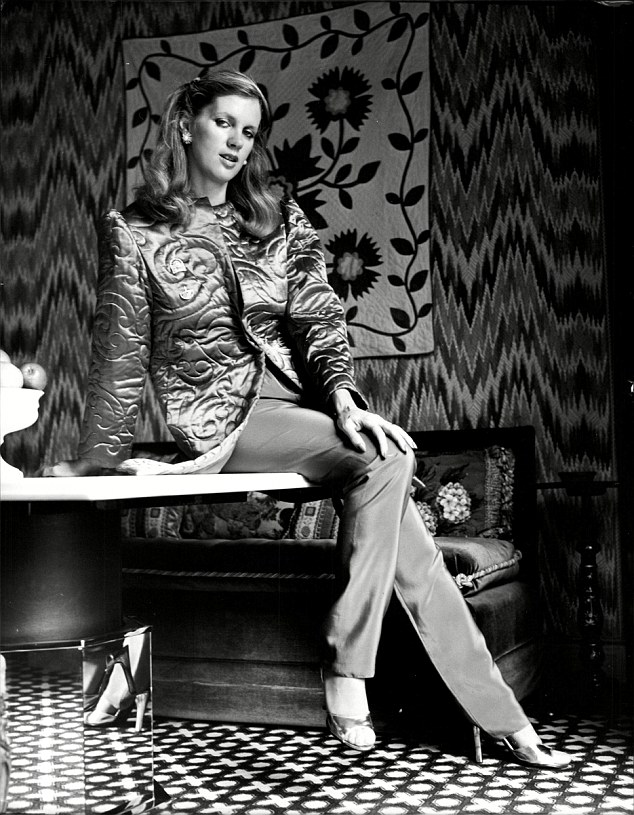
Tessa Kennedy in 1979
Word of their imminent arrival in the UK had reached the police. Once the SS Liberte entered British waters, a police launch pulled up alongside and, in plain sight of the ship’s passengers, Dominick gave himself up, was arrested and hauled off the SS Liberte to serve a one month sentence in Brixton prison. Tessa was devastated. BBC news film of the time captured her covering her tear-stained face as she walked down the gangplank, lined by a bank of news cameras, into the waiting taxi. At Dominick’s subsequent trial, the Judge accepted that Dominick obviously did love his bride but commented: “Every parent knows that love doesn’t translate into bread and butter.”
I am fairly sure my parents would have nodded in approval at that remark. The Judge then directed that Dominick be released but until otherwise ordered by him, Tessa should remain a Ward of Court. As a result of all the stress brought on by her separation from Dominick, Tessa miscarried their first child.
Meanwhile, I was still confined to boarding school, and knew little of all this until I met up with Tessa and Dominick during my summer holiday. The newspapers at school continued to be heavily censored. And once my friends came to the unwelcome realization that my sister had not actually eloped with our idol, Elvis Presley, but with an unknown artist named Dominick Elwes, my popularity noticeably waned!
A few years later, in 1964, when I worked as a producer for 1010 WINS, New York, a British journalist approached me at a party and said: “You must be Caroline, Tessa’s little sister.” I told him I was. “I got to know Tessa,” he continued. “I flew around the world with her, from London to Scotland, from Scotland to New York, from New York to Havana, from Havana back to New York and then took the boat with her back to the UK in 1960. I was working for the Daily Mail then, young free and single. My married journalist friends were so envious of me. Those were heady times for a young rookie journalist like me. I will always be grateful to Tessa and Dominick.”
Once Dominick was released from Brixton he and Tessa became a celebrated couple in London. Although impecunious, they were entertained like Royalty and, since both were good storytellers, their presence was very much in demand at movie premieres, theatre openings and dinner parties. The one thing they had in common was a love of celebrities. And very soon Tessa could count among her best friends, Joan Collins, Candice Bergen, Princess Grace, King Hussein, Rudolf Nureyev and Leslie Caron. In quick succession Tessa gave birth to three sons, Cassian, destined to become a top Hollywood movie producer, Damian, who became a successful LA artist, and Cary who gained massive attention and enduring fame for his role as the innocent farm boy, Wesley, The Dread Pirate Roberts, in The Princess Bride.
The Profumo Scandal
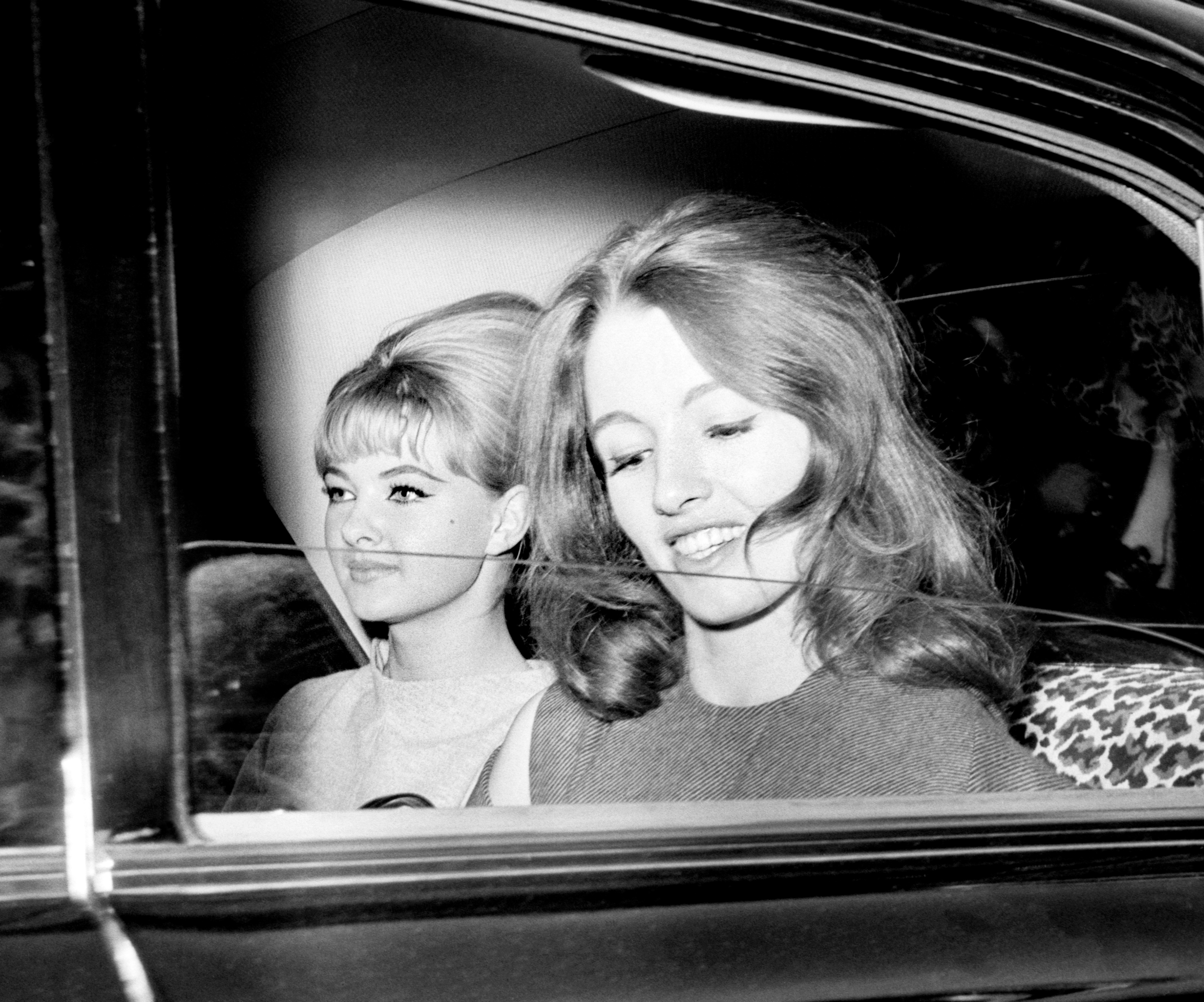
Christine Keeler, right, and Mandy Rice-Davies leaving the Old Bailey after the conclusion of the fist day’s hearing of the trial at the Old Bailey in which Dr. Stephen Ward, 50 year old osteopath faces vice charges.
In 1962, Dominick ventured into film for the first time. It would be called The Christine Keeler Story, starring Christine Keeler as herself. Dominick knew Stephen Ward, the central character in the Profumo Scandal as they attended many of the same parties in London almost every night. And, with his own instinct for attracting publicity paired with Christine Keeler’s international notoriety, Dominick thought he would he would make some serious money. Coincidentally, more than two decades later, when I was researching my book on Stephen Ward and the Profumo Scandal, I came across Dominick’s original script of The Christine Keeler Story, along with reel to reel tapes that Stephen Ward had recorded while he was on remand in prison. They had all been stowed away in a trunk in the attic of Stephen Ward’s literary agent, Pelham Pound, another of Dominick’s acquaintances.
Sadly, Tessa’s relationship with our father was shattered. She continued to blame him for Dominick’s prison sentence and refused to forgive him. It didn’t make much sense to me as our mother had been equally to blame. It was their joint decision to refuse to allow Tessa to marry Dominick and it was their joint decision to make Tessa a Ward of Court. The first time Tessa met up with my father again was almost a decade later, in 1969, at my own marriage at Chelsea Registry Office. But the relationship, although appearing cordial on the surface, was damaged almost beyond repair.
By this time, too, Tessa and Dominick, after a roller-coaster of a marriage, had parted ways and Tessa was engaged to Hollywood film producer, Elliott Kastner, and pregnant with Kastner’s first child, a boy, Dillon, who was born in 1970. Their second child, Tessa’s only girl, Milica, was born in 1972.
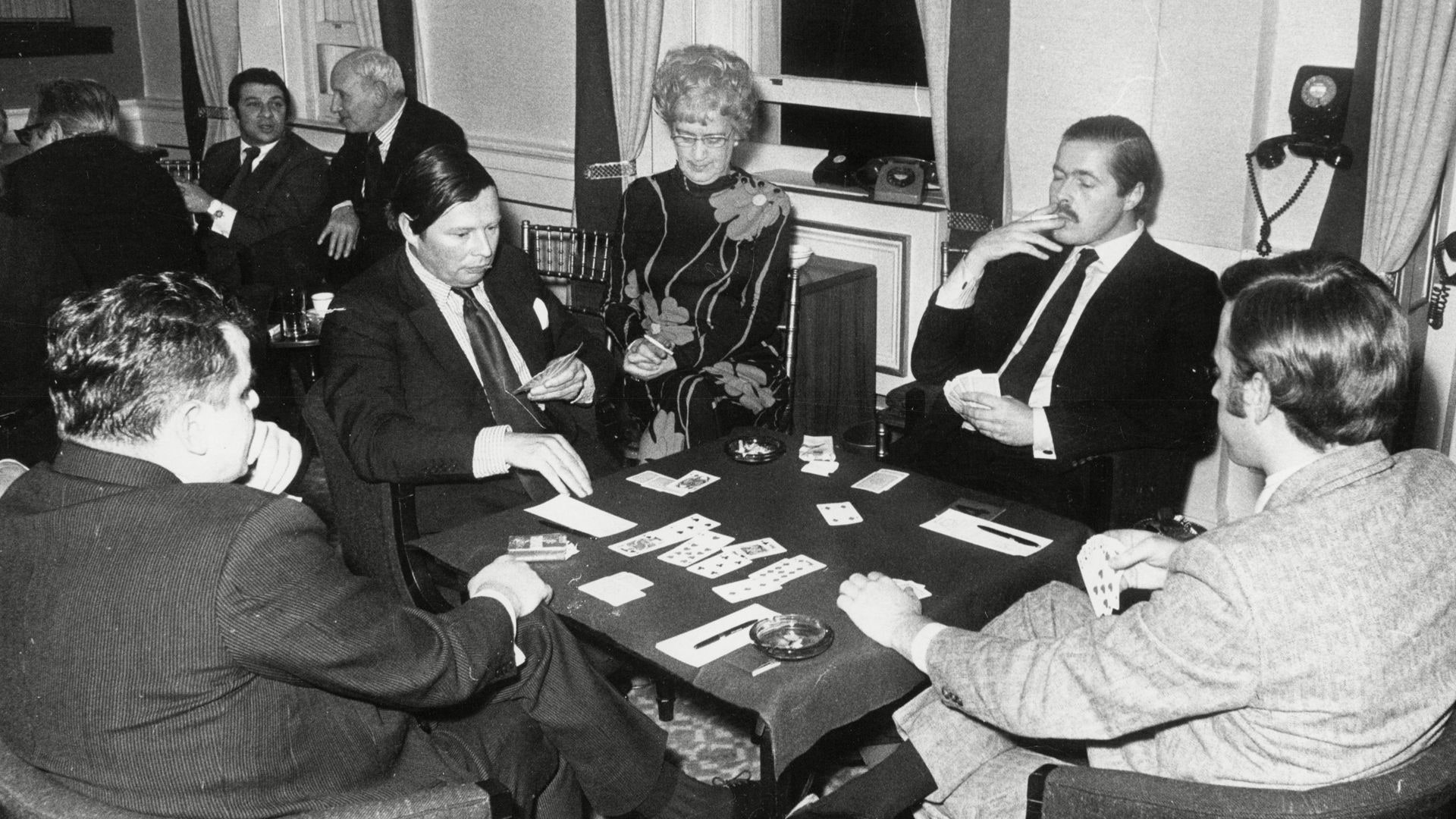
Lord Lucan (2nd from right) playing cards in 1973
Dominick never remarried. After a lifetime of suffering untreated bi-polar disorder, he committed suicide in 1975, following a very public humiliation. He was ostracized by his professional gambling friends following the notorious murder of Sandra Rivett, nanny to Lord and Lady Lucan’s children. Lord Lucan who, the police said, had mistaken Rivett for his wife on the night of the murder at his estranged wife’s house in Lower Belgrave Street, was the principal suspect. The newspapers claimed Lucan’s friends, Aspinall and Goldsmith, had facilitated Lucan’s swift and clandestine departure from Britain that very night, just hours after the murder. These men and the rest of Lucan’s tight-knit circle never admitted it, never even spoke about it to anyone, including their wives. Lucan’s abandoned car was discovered on the south coast. He was never seen again, thus creating an intriguing and enduring mystery. Dominick’s friends accused him of breaking their vow of silence and betraying Lucan by selling a story of his friendship with the missing Earl to the newspapers. Over the succeeding decades hundreds of “sightings” of Lucan were reported but none were verified.
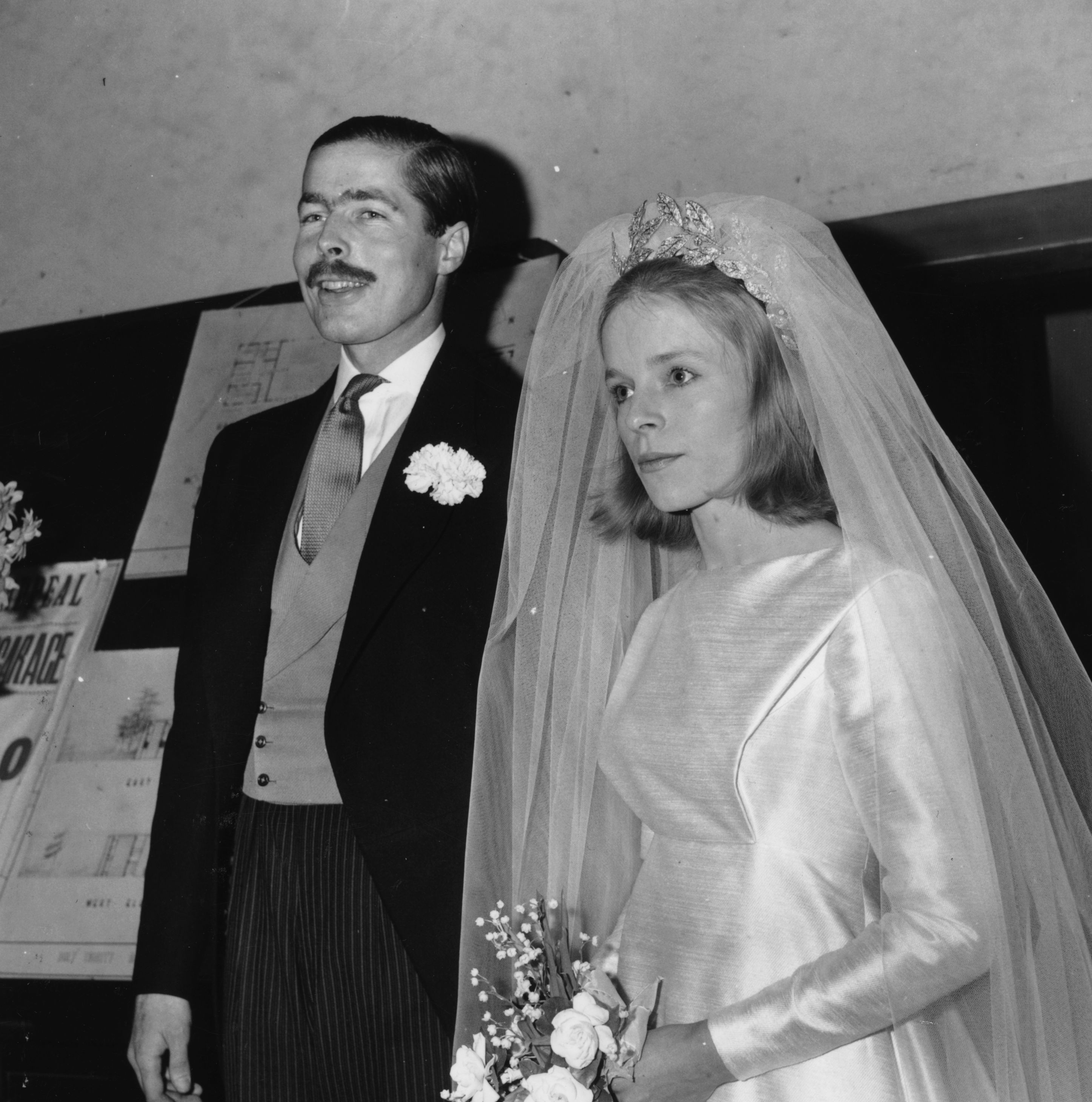
28th November 1963: John Richard Bingham, Earl of Lucan, and Veronica Duncan after their marriage.
Tessa’s career as an interior designer had, by now, taken off. She was designing homes for the very rich and very famous, including King Hussein, George Harrison, Eric Clapton and various Indian Princes and Russian oligarchs. She designed suites at Claridges, cocktail bars at the Ritz and Annabel’s and the whole three floors of Mayfair’s exclusive Clermont Club. Her social life was as busy as her professional life. To many she appeared to be a “superwoman”, managing to juggle her five children, work and play with ease, panache and a great sense of humour.
In 2014, after decades of being recognized as the “doyenne” of British interior designers, Tessa retired to her magnificent home outside Windsor and to a comfortable life as hostess to her many friends, mother to her five children and grandmother to her six grandchildren.
Would you like to support Flashbak?
Please consider making a donation to our site. We don't want to rely on ads to bring you the best of visual culture. You can also support us by signing up to our Mailing List. And you can also follow us on Facebook, Instagram and Twitter. For great art and culture delivered to your door, visit our shop.



